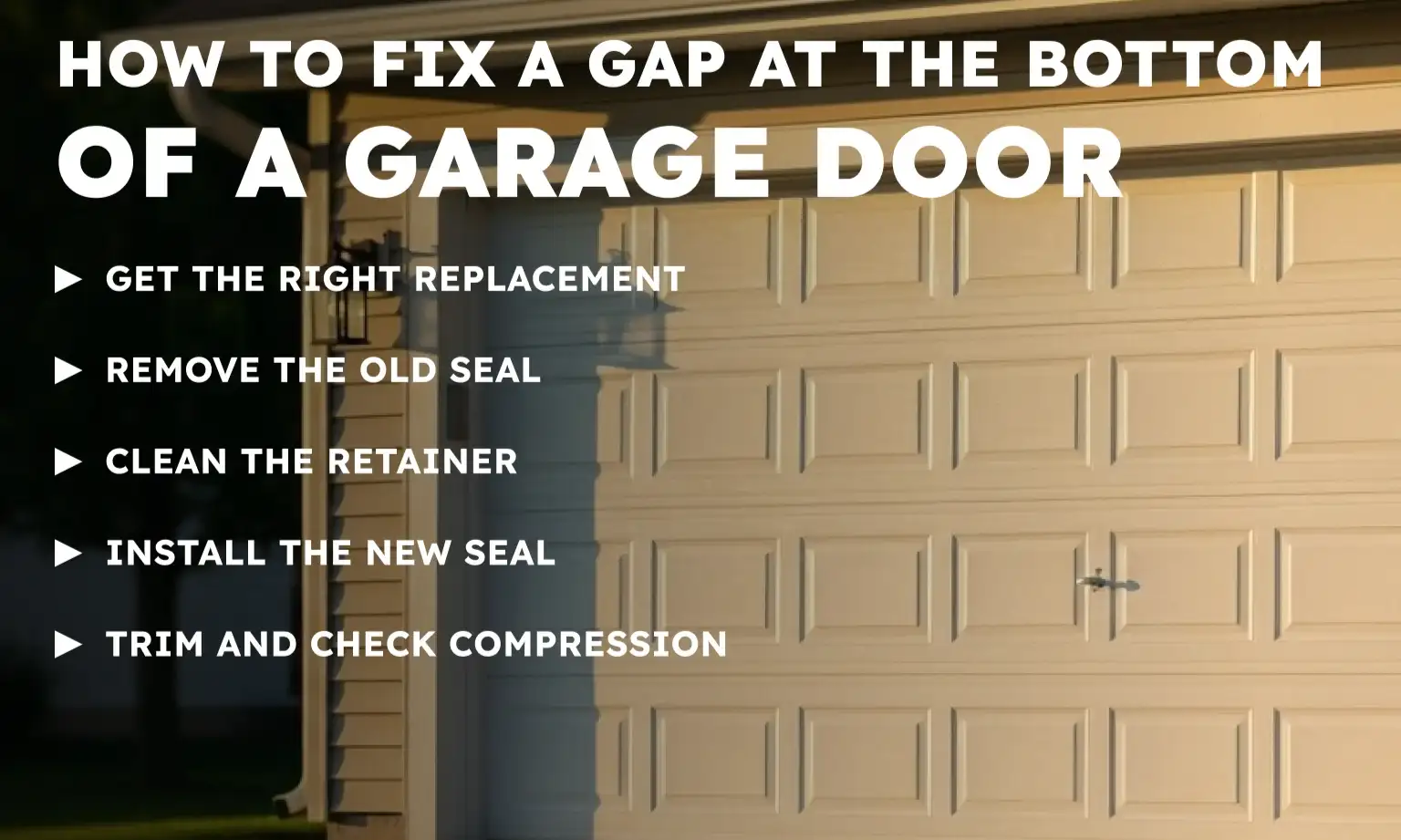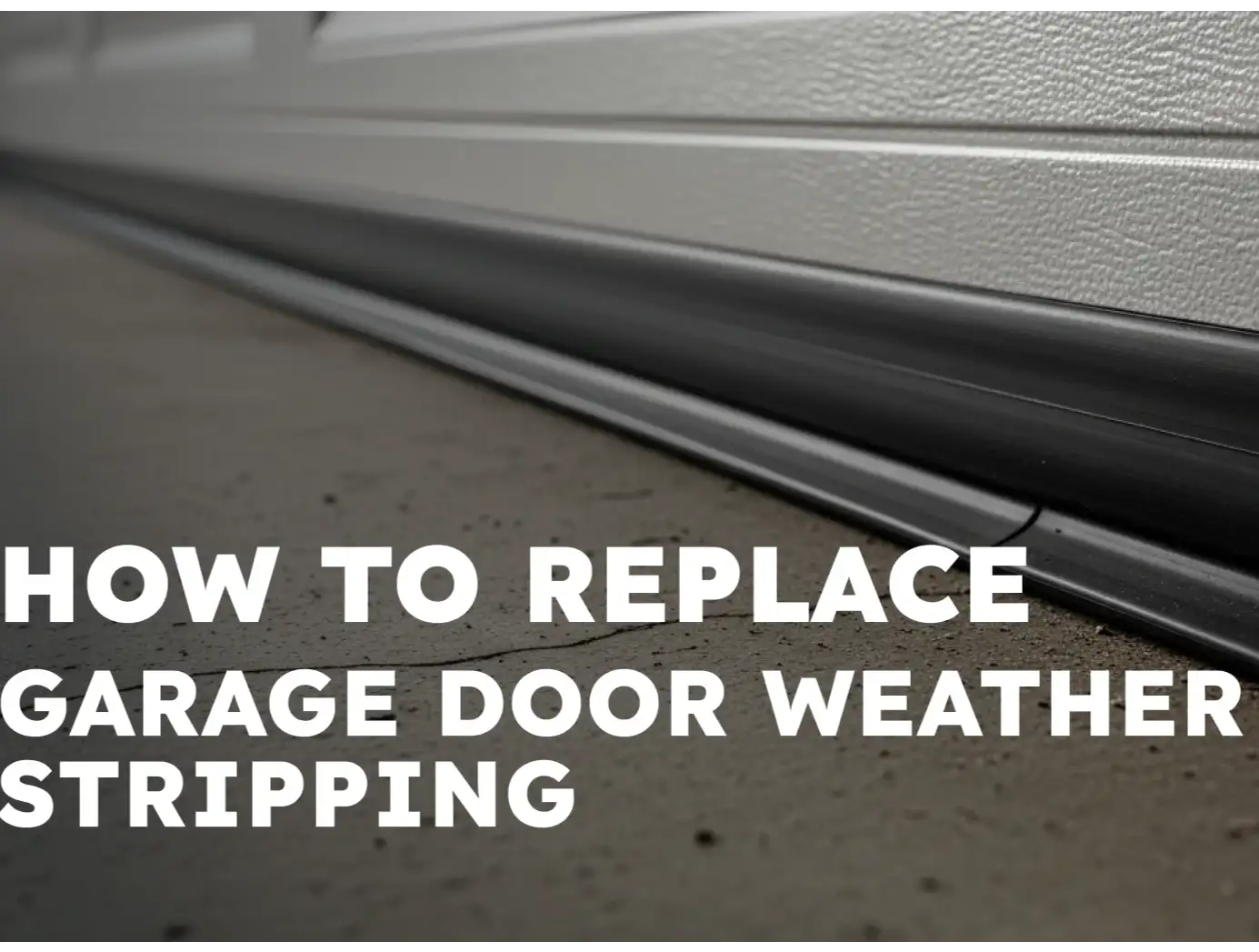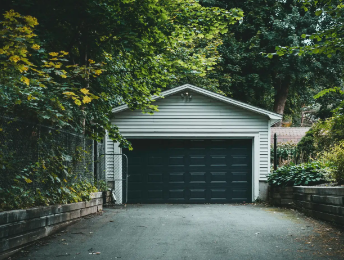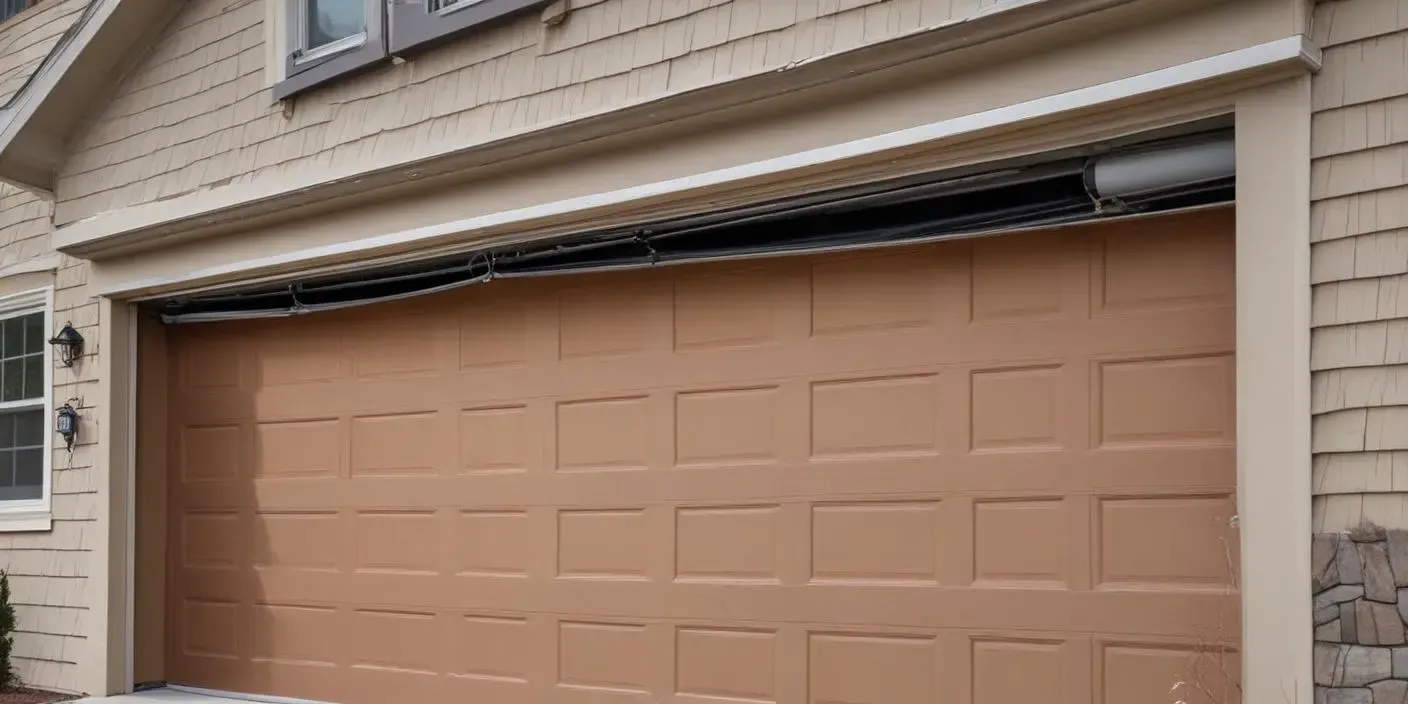How to Fix a Gap at the Bottom of a Door: Step-by-Step Guide
Published: Nov 14, 2025
Seeing daylight under your door, feeling a draft, or finding pests and water in your home or garage are signs of a gap at the bottom of a door. In many cases, swapping the weather seal door components solves the issue. This simple upgrade stops drafts, saves energy, and keeps debris and pests out. In this guide from Up & Down Garage Doors, you’ll learn how to fix a gap at the bottom of a door step by step.
Stop Drafts Under the Door: Fixing Entry Door Gaps

For a standard sectional garage door, a bottom gap is usually caused by a worn bottom seal or an uneven slab — not a hinge issue. Here are the two most common solutions to stop drafts under the door.
First, check the bottom seal (astragal). It’s the flexible strip of vinyl or EPDM in the aluminum retainer along the door’s lower edge. If it’s cracked, flattened, or missing, replace it. There are two main types:
- T-end bulb seals. Fit into T-channel retainers under most residential doors.
- Bead/J-type or U-channel seals. Used on doors with matching retainers — buy the profile that matches your track.
If the seal looks good, check the perimeter. Look at the gap between the door and frame when closed along both jambs and the header. If you see light, replace the side and top vinyl stop (perimeter weatherstripping) and set it so it just contacts the door face. If the floor is wavy, add a threshold to create a consistent landing for the bulb seal. Unlike an entry door — where you might shim behind the bottom hinge on the jamb — garage doors rely on track, roller, and spring settings, so leave those adjustments to a pro if needed.

How to Fix a Gap at the Bottom of a Garage Door
A garage door gap is a different problem because the door rolls up, it doesn’t swing. The solution here almost always involves the seal system, not the hinges. Here is how to fix a gap at the bottom of a garage door.
The first thing to inspect is the garage door bottom seal. It’s the thick, flexible vinyl or EPDM bulb that runs along the door’s lower edge. Over time, it can become brittle, cracked, flat, or even chewed through by animals.
Here is the general process for replacing it:

- Get the right replacement. Raise the garage door partially so you can see the end of the seal. Note how it fits into the metal track (or “retainer”) on the bottom of the door. Most are a “T” shape, but some are “L” shaped or rounded. You must buy a replacement seal that matches your track’s shape.
- Remove the old seal. Slide it out of the retainer. You might need a firm pull or a flat screwdriver to start the edge.
- Clean the retainer. Wipe out grit so the new seal won’t bind.
- Install the new seal. Lightly lubricate the track with a bit of soapy water or silicone spray. This makes a big difference. Fold the new seal in half (like a “U”) and begin sliding it into the track, one end at a time. It’s often easier with two people — one to feed the seal and one to pull it from the other side.
- Trim and check compression. Trim flush with a utility knife. Close the door and confirm the bulb flattens evenly end to end. If light shows at a corner on a wavy slab, add a garage door threshold seal for a consistent landing.
Still seeing daylight at the jambs? Swap the perimeter weatherstripping and follow our guide on how to seal garage door gaps for side-seal steps. For a shop-quality result, Up & Down Garage Doors will match the profiles and tune the contact line so the door closes cleanly and quietly.

How to Adjust Door Threshold or Install a New One
What if your bottom seal is new, but light still slips under the door? That often points to uneven concrete. In that case, a garage door threshold seal is usually the simplest fix.

A threshold seal is a sturdy rubber strip that glues to the floor, not the door. Install it just behind the door line so the bottom bulb compresses against the raised ridge when the door closes. If you’re wondering how to fill the gap between the door and floor on a wavy slab, this creates a consistent landing and blocks water, dust, and pests. Let the adhesive cure fully before driving over it.
For entry doors, you may not need a new part at all. If your model is adjustable, here’s how to adjust the door threshold: check for small screws on the top of the threshold plate, then turn them to raise or lower the center until the sweep makes light, even contact across the width. Recheck with a simple paper pull at the latch side, center, and hinge side.
Fixing the gap is a fast way to make your space more comfortable and energy-smart. For an extra boost, consider garage door insulation to cut heat loss through the door itself. If you’d rather have a pro set it up, Up & Down Garage Doors can supply the right threshold kit, set the compression correctly, and leave the door closing clean and quiet.

A Tighter Seal for a Better Home
A door bottom gap on a garage door might seem small, but it can raise energy bills and invite water and pests. Now that you know how to fix a gap at the bottom of a door — by matching the correct garage door bottom seal and, on uneven concrete, adding a threshold — you can tighten the seal and protect your garage.
Start by confirming your door type and inspecting the bottom seal and side weatherstripping. Most fixes are straightforward. If the floor is very uneven or your garage door needs professional adjustment, contact Up & Down Garage Doors and we’ll get your doors sealed tight.
Frequently Asked Questions
What is the gap at the bottom of a door called?
The intentional space under a swinging entry door is often called the “clearance” or “under-door gap,” and it allows the door to move over rugs or flooring. The part designed to fill this space for sealing is the “door sweep” or “bottom seal.”
Why do doors have a gap at the bottom?
Entry doors need a small gap for clearance to prevent them from scraping the floor. Garage doors are designed to have their flexible bottom seal compress against the floor, creating a tight seal. A visible gap appears when this seal fails or the floor is uneven.
How do you fill the gap at the bottom of a door on an uneven floor?
For a garage, the best solution is a garage door threshold seal that you glue to the floor. This creates a new, even surface for the door’s bottom seal to press against. For an entry door, you can use a thicker, more flexible door sweep or install an adjustable threshold.
Can I just use a door draft stopper?
A door draft stopper (like a fabric “snake” or tube) is only a temporary fix. It can help reduce drafts, but won’t stop water, insects, or mice. A properly installed sweep or seal is the correct, long-term solution.
How do I fix a gap between the door and frame when closed?
If you see a gap between the door and frame when closed on the sides or top, the problem isn’t the bottom seal. This requires replacing the “perimeter weather stripping,” which is the foam or rubber stripping that runs along the stop molding of the door jamb (frame). For more details, check how to fix garage door gaps on the sides.
How do I fix a drafty door bottom on a garage door?
The usual fix for how to fix a drafty door bottom is a new bottom seal (astragal) that matches the retainer under the bottom panel. After installing, close the door and check for even compression. If light shows on an uneven slab, add a garage door threshold seal to create a consistent landing.
What’s the best way to insulate a door gap on a garage door?
For how to insulate a door gap, combine an EPDM bottom bulb with fresh perimeter weatherstripping at the jambs and header. On wavy concrete, a threshold seal helps. If you want more thermal performance, add garage door insulation panels to the sections.
How do I cover the bottom door gap quickly on a garage door?
If you’re searching for how to cover the bottom door gap, the fastest, most durable option is a garage door threshold seal glued to the floor, paired with a correctly sized bottom seal. It closes the gap and blocks water and debris better than temporary fixes.
How do I fill the gap at the bottom of the door on a garage door?
Here’s how to fill the gap at the bottom of the door the right way: identify your retainer (T-channel, bead/J, or U), buy the matching bottom seal, lubricate the retainer, slide in the new seal, then trim and test. If a corner still leaks, add or adjust the threshold.
How do I fix a gap in a door if the air leak isn’t at the bottom?
For how to fix a gap in a door that leaks at the sides or top, replace the perimeter weatherstripping (vinyl stop) so it just touches the door face. If the panel or track alignment looks off, have a pro adjust it.
How do I fix the gap at the top of a garage door?
To address how to fix the gap at the top of the door, install new header weatherstripping and set a light, even contact across the width. If the top section still doesn’t meet the seal, a technician can fine-tune track alignment or check for panel bow.
You may also like


